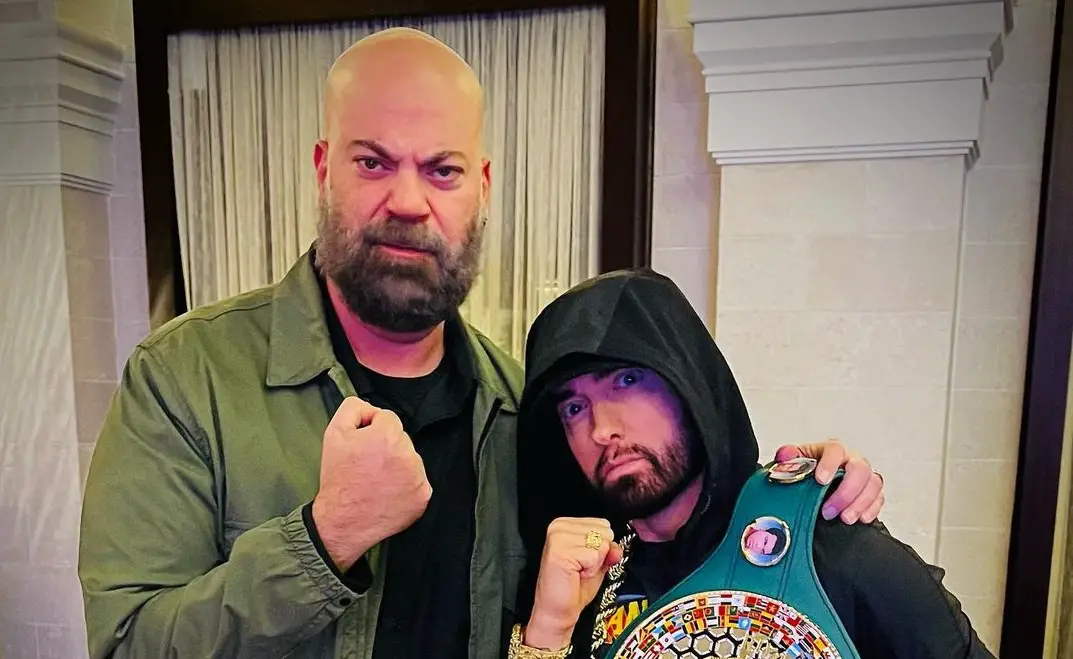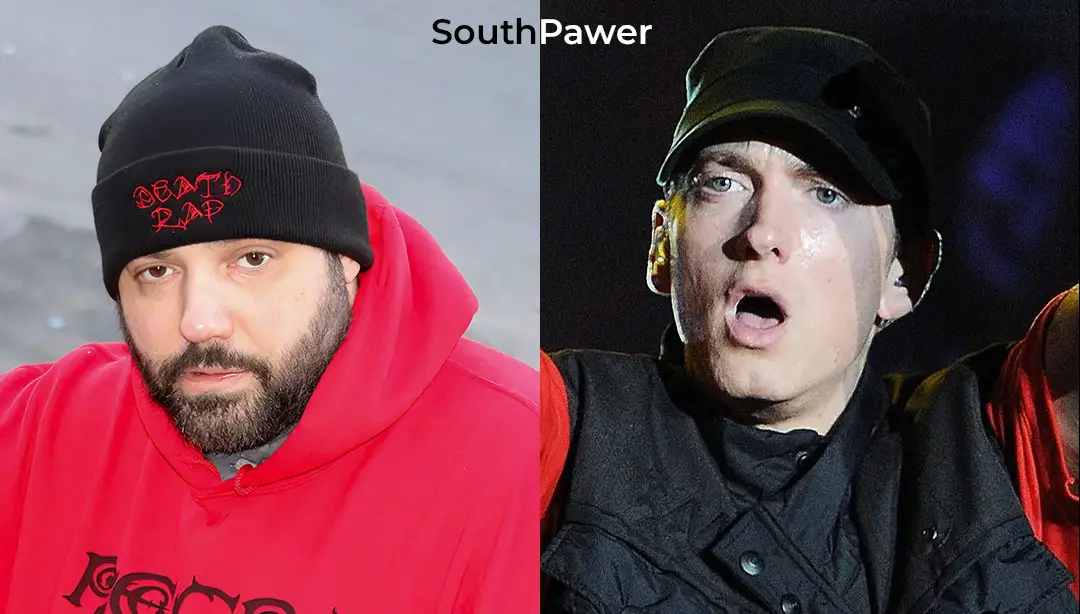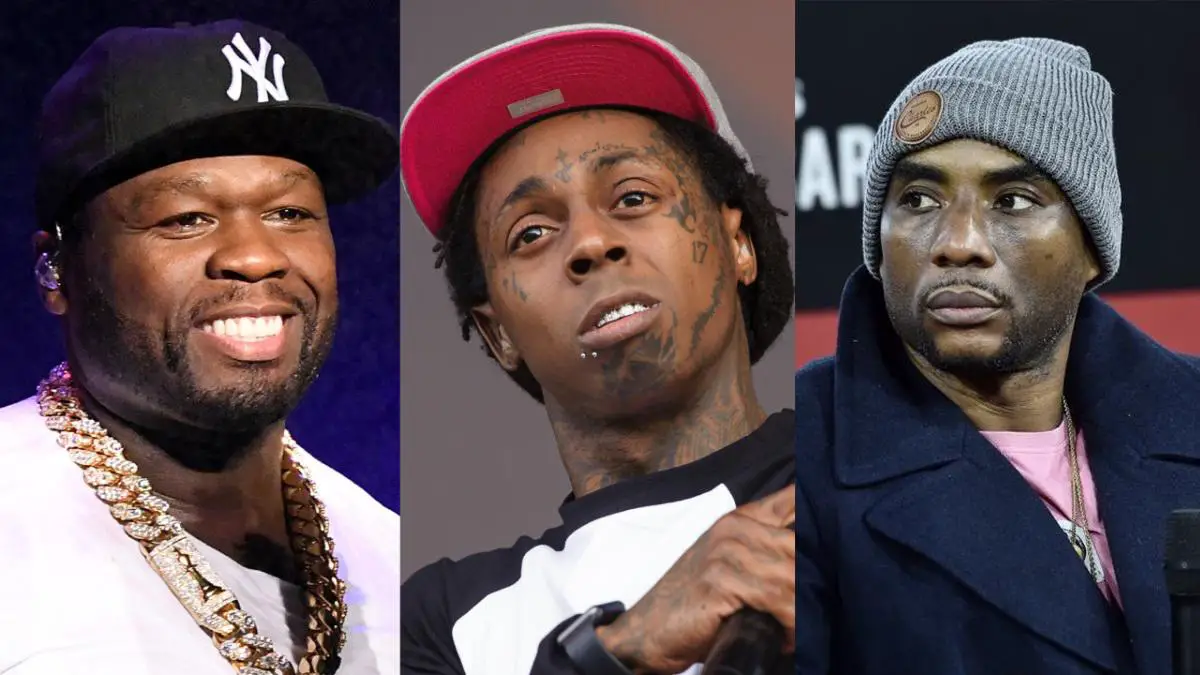To promote the STANS documentary, Eminem’s longtime friend and manager Paul Rosenberg and the movie director Steven Leckart sat down on Billboard where they discussed the new project. You can check out the conversation below.
So how did Stans come about?
Rosenberg: Marshall had been approached and still is approached on a constant basis about the idea of making a documentary on his career, and he’s always seen that as something that people do when they’re at the end of their career and are looking back, or it’s something that people do about a famous person when they’re no longer here to tell their story. He just didn’t see himself at someone who’s at that point of his career; he continues to make music, he continues to be relevant and working and wasn’t interested in that traditional, look-back documentary idea. So we’ve turned down a million things.
The challenge was to come up with something that would give him the opportunity to do something that was unique and compelling and different than other people had done. Because of the song “Stan” and the natural connection to him and his observance of fanatical fandom, the thought came to my mind, what about if we turned the camera around on the fans and captured some of their stories, and if we do that we can see if it’s interesting enough and we can get enough stories to maybe create the film that way.
What was the timetable of this?
Rosenberg: Believe it or not, around 12 years ago. When we first started it was very DIY and we took some people we had been working with on behind-the-scenes footage and brought some people out with us on the road and had them film some of his fans and interview them and get some of their stories. There was a group of people that, because of them just continually showing up and us getting to know them, we thought they were interesting — in particular the guy Zolt Shady, who’s somebody we’ve known for many years and I always thought he had an interesting story to tell and is frankly quite a character. So we started with him and a few other people and put together a sizzle reel and had it in our back pocket. We just kept putting it on the back burner and pushed it to the side until we found a window to really dive into it. When we decided we were ready to actually turn this into a film and a full production we reached out to our networks…and we were introduced to Steven through Antoine, who we had a relationship with dating back to Southpaw.
Steven, what did you think as this dropped in your lap?
Leckart: “Stan” is one of the most unconventional and iconic songs ever written, so to figure out how to look at this world through an unconventional film was an incredible opportunity to do something different. I was incredibly excited; having grown up on hip-hop in the ’80s and ’90s, I was part of the generation that discovered Marshall on MTV. I loved how ridiculous he was. I loved his sense of humor. I loved how dark “Stan” was. I was along for the ride. He felt strongly, as we talked, that if we could bring other fans along for the ride and use archival (footage) to take them back in time they would also fall in love with this guy and see the depth in him… (laughs) This is a long way of saying, “Pinch me, what a great opportunity.”
This is still a film about Eminem, albeit with the slightly tilted view of the Stans’ perspective. How did you balance the approach?
Rosenberg: That was something we paid particular attention to when we talked to Marshall. We certainly didn’t want him to just talk about his career and “How did you feel when this happened? How did you feel when that happened?” His interview with Steven, I think, is so unique because of the things Steven focused on. And we allowed the fans to tell parts of Marshall’s story through his music and how they related to it. There’s certainly many parts of his life and career we did not cover; it covers the beats necessary to tell the story of this film, but there’s a lot more for us to go over and talk about when the time and the opportunity is right.
Steven, what was your approach for the interview?
Leckart: I think from the moment Paul introduced us and I got to talking to him, which was before we hired anybody to work on the movie, we sat down and chatted and there was a nice rapport. He was really present, and I was struck by that. Going into the interview, I don’t write questions; I have an idea of what I’d like the conversation to be. I just was really struck by how he could ride this tone of being very funny, sharp, witty, quick and then on a dime get totally sincere and straightforward. To me what you see in the film is what you get from him, in my opinion. I can’t speak to other people’s experiences.
Where did the Stans come from?
Leckart: There were a handful we knew existed, and Paul had the idea of what if put something online; that’s the way we were really going to be able to get the fan base. So we built an online questionnaire that asked a lot of questions that go beyond “How long have you been a fan?” but really into things like, “Have you ever written him a letter? What did you say in the letter? How do you identify with them?” Then we asked everybody for a 60-second video. Within three or four months we had 9,000 submissions from all over the globe, and from that we looked for people who would be surprising but felt very sincere and very deep in their love of Marshall. We looked for people who had a spark. I’m proud of the people we ended featuring.
We get to see Zolt finally meeting Eminem in the film, and most of your other Stans professed a desire to do the same. Have they gotten to?
Rosenberg: They have not. It’s funny because the first time Marshall saw a cut of the film one of the first things he said was, “I feel like I need to meet these people.” Part of the journey of the film and some of the tension, I think, that’s built in the film was this question of, “Are they going to get to meet him?” and “What’s that going to be like?” We felt like that was going to be too obvious, right? The mystery behind Marshall and the idea that people create this image of him in their heads is something we didn’t necessarily want to destroy in the film. So certainly that wasn’t part of the movie. It hasn’t happened, really, since. It could happen at some point, but there’s not a specific plan at this time.
What do you think Marshall learned about anything — his music, the fans, the way they see him — from the film?
Rosenberg: I don’t know that there’s anything he learned that he didn’t know, generally, but I think that what was most striking for him and for myself was just how deep and emotionally connected people are through his music, in different ways. They’re all telling different stories in different ways that the music impacted them, from dealing with addiction to mental health issues to coping with loss. I just think seeing that all in one place — certainly for me, and I think him too — was overwhelming because you don’t really have the opportunity to think about it and realize the depth that people have in the connection through his music.
What surprised you as you were making the film?
Leckart: I guess the story you see in the film about his experience going to the mall, just with his kid (and being mobbed), right when he became famous. When he became famous I was in my late teens, a college student; I don’t know if I knew what he was going through as a young parent. Now that I’m one I made me have a lot of deep empathy for him and what he went through.
Rosenberg: It wasn’t what (the Stans) said, but it’s how they said it…finding out how they related to his music in different ways. It was surprising there were that many different stories that we were able to find and how deep it got and how emotional it was.
Was there anything in the film that you could not have anticipated being part of it?
Leckart: There is. It’s something so personal to him it would have been inappropriate for me to make the call, creatively. It’s a song that plays during the moment after Proof’s passed and we’re seeing all the photographs and everything. I originally used score (music) with all the lyrics coming up on the screen ’cause he’s written so many songs about Proof, and the very last lyrics are from “Arose” (from 2017’s Revival). It’s a powerful moment. It’s very personal. When (Eminem) saw an earlier cut of the film he felt strong that “Arose” should play over the whole sequence and had exact bars he wanted to play. That was the note: “I would like this song, and this specific spot in the song.” That’s an example of how collaborative he was.
What was the holy grail finds in terms of footage?
Leckart: The list is long; this is a very dense and layered film that fans are going to freeze-frame and see stuff and spot stuff. We found the original reels from the “Stan” music video, shot on actual films. One of the producers found them and brought them out of the archives at Interscope. There were pieces and parts that you never saw in the music video. This is a very dense and layered film that fans are going to freeze-frame.
Rosenberg: That was very surprising for me, ’cause I didn’t know those reels existed. Through the years and throughout time people keep uncovering more and more footage from the battles at the Hip Hop Shop. That always blows my mind.
As Stans rolls out, what’s next for Eminem? As if you’ll tell me.
Rosenberg: (laughs) Marshall is a creative being. He’s constantly in the studio; his 9 to 5 has become going to the studio in the morning, is typically home for dinner, Monday through Friday. He’s creating whether he’s writing or making beats or messing around with stuff. He’s always making something. You can expect that to continue, and when he gets to a place where he feels like he’s got a body of work he’ll release an album. He’s working on stuff and there will be more music; I can’t say when because I’m not sure, but it’s coming.
[VIA]



